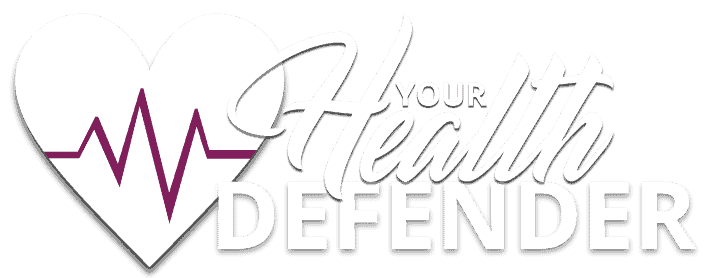As Your Health Defender, I want to advocate for you wherever you’re at in your pregnancy journey. Whether you’re dreaming for the future or preparing for the realities that are soon to come your way, you’re in the right place.
After extensive research, I’ve chosen to share the best information and recommendations for you when it comes to pain management during labor. Not only that, you’re now a part of a thriving community of health warriors, passionately fighting on behalf of you and the world’s health.
In this blog I am going to share how to best prepare before labor, natural pain relievers during labor, pain medications to consider, and how to best talk with your physician about any and all of these topics.
Let’s dive in and get you closer to knowing all about pain management during childbirth.
Preparing Before Labor/Delivery:
Consistent and realistic exercise (WITH THE OK OF YOUR DOCTOR) is key. It can help build up your muscles for the intense stresses of labor. Exercise increases your endurance which you are definitely going to need, especially if labor goes longer than expected!
DON’T overdo it when exercising while pregnant. Talk to your doctor to develop a safe plan.
Childbirth classes are a great way to do this in a guided setting, with professionals who know exactly what helps and what doesn’t. This is also a great opportunity for bonding with your partner and uniting during the pregnancy.
Childbirth classes will teach you various techniques for pain management during labor. The techniques vary from stretches to strengthen your uterus muscles to visualization.
Here are the two most common philosophies in the U.S. for managing pain during childbirth:
The Lamaze Technique
This is the most popular method of the two. The Lamaze doctrine teaches that birth is natural, normal, and healthy, and that women should approach it with complete confidence and empowerment.
Lamaze technique classes bring women knowledge regarding pain perception, and how to decrease it. Lamaze uses relaxation, distraction, breathing, and massages through a supportive guide. Lamaze is incredibly supportive of women making an informed decision regarding pain medicine, and takes a neutral position on the subject.
The Bradley Method (Also Called Husband-Coached Birth)
The title here gives a lot of this one away. The Bradley method puts an emphasis on taking on childbirth the natural way, and focuses on an active participation of the baby’s father as birth coach for childbirth pain management.
A major focus of the Bradley method is to avoid medicine unless the situation absolutely calls for it. The Bradley method focuses on good nutrition (you know this one gets some major points with me), exercise during pregnancy, and using deep breathing as a method of coping with pain during labor.
While the Bradley method heavily pushes (pun intended) for a natural birth experience free of medicine, the classes also account for unexpected complications, and prepare you for those as well. So, be on the lookout for that information and if your Bradley class is not covering it, be sure to do outside research on that, like emergency cesarean sections, for example.
Natural Routes During Labor/Delivery:
Hypnosis
For some mothers, hypnotherapy offers a way to tap into using their own minds for managing pain during childbirth.
Hypnosis is a mental state that involves your rational mind being set aside, and your subconscious, which deals heavily with emotions, memories, and feelings, taking the front seat.
Hypnosis typically involves guided visualization, soothing images, and music. Once the overly analytical part of one’s mind slows down, one opens their minds up to positive thoughts. This is a great way to focus your mind elsewhere for better pain management during labor.
With pregnancy, be mindful that hypnosis is not going to COMPLETELY take your pain away 100%. Going in with that expectation will be a huge letdown and may cause you extra, unneeded anxiety.
Discuss your hypnosis plans with your doctor so that you’re on the same page for your labor pain relief. This is not a last minute option! Learn and practice BEFORE labor to truly utilize its effectiveness.
Yoga
Yoga is a spiritual discipline that involves breathing, meditating, and moving your body into specific positions. It is widely accepted and practiced for calming and health reasons.
Yoga works wonderfully for managing pain during childbirth by opening the shoulders and stretching the back. Yoga can even be used for pushing! Many yoga poses are postures many women would naturally take during labor, so that coupled with the breathing exercises, makes it a natural go-to during delivery.
This is a fantastic tool for yoga poses that bring labor pain relief. Erica Winters goes over seven prenatal poses that will help you manage pain, relax, and get your baby into the right position for their big debut.
Meditation
Meditation requires one to focus their thoughts on one specific reflection.
Scientists and doctors have studied the benefits of meditating during delivery and have proven that it can be of great help for moms-to-be. This is a great thing to do BEFORE delivery  as well, as moms who have high levels of cortisol, or stress and anxiety, are more likely to deliver babies at preterm.
as well, as moms who have high levels of cortisol, or stress and anxiety, are more likely to deliver babies at preterm.
Meditation can keep that anxiety at bay, shifting the body out of the “fight-or-flight” response. The result? A calmer, more relaxed you.
This meditation list for moms-to-be in labor is a great resource.
Other natural pain management during labor actions to consider/research: Walking, massage or counterpressure, changing positions, taking a bath or shower, listening to music, and distraction.
Pain Medication:
There is a list of pain medicines that can be used for childbirth pain management. These medicines vary depending on the situation.
Many women rely on the use of these medicines, and they can be a huge help in maintaining energy by lessening pain during contractions.
It’s important for you to talk to your healthcare provider about the good, and not-so-good, things about each type of medicine.
Here are the main groups these meds fall under:
Regional Anesthesia
This is the most well known and talked about pain medicine during labor. As the name suggests, regional anesthesia blocks the sensation of pain from specific areas of the body. Epidurals relieve the most pain from the entire body below the belly button and are a form of local anesthesia for childbirth pain management.
Epidurals do have some drawbacks that can cause dropping blood pressure, itching, difficulty urinating, nausea, or headaches for the mother. The risks to the baby are minimal, but low blood pressure in the mother may cause complications for the child.
Analgesics
Analgesics ease pain, but do not completely numb it. They don’t affect muscle movement or sensation. They can also be administered in a number of different ways. If they are given through an IV, vein, or shot, they can affect the whole body.
These meds can cause side effects in the mother, such as nausea or drowsiness. There are also effects on the baby you should consider and ask the doctor about.
Tranquilizers
Unlike the other two, tranquilizers do not actually ease pain, and rather calm your nerves. At times, these are coupled with analgesics.
Things To Consider About Either Avenue You Choose:
- You may change your mind during labor
- Medicines and pain relief can relieve a lot of your pain, but most likely not all of it
- Learn about how the medicines affect the baby, whether you plan to use it or not, so you can plan ahead for decisions during labor in case your mind DOES change
- Keep in contact with your healthcare provider. The more you’re both on the same page regarding childbirth pain management, the better.
In Closing
This is a very important time, isn’t it? I’m honored to be a part of it in any shape or form, as you all are my top priority and the very reason why I study the body and mind.
I know there is a plethora of information out there, and it’s tempting to feel scared, anxious, or overwhelmed about what is right or wrong.
Just know, the fact you’re here, researching and learning, shows you are doing AMAZINGLY. I hope this information about pain management during childbirth takes you on a learning journey! You’ve got this, and I’m beyond excited for you.
For more information, please checkout our Baby’s First Day course!






